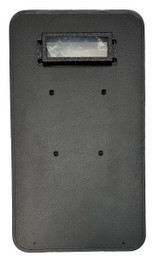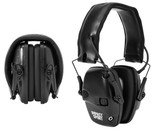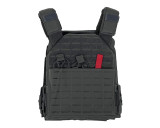Demystifying Plate Carriers: Construction and Selection Guide
In the realm of personal protection, a plate carrier is a crucial component, especially for those navigating high-threat environments. Whether you're a law enforcement officer, a military professional, or a civilian concerned about personal safety, understanding what plate carriers are made of and how to choose the right one is paramount. This comprehensive guide aims to shed light on the composition of plate carriers and provide insights into making informed decisions.
Understanding Plate Carrier Construction
1. Outer Shell Materials:
Plate carriers are often constructed with robust outer shells made from high-density nylon or Cordura fabric. These materials provide durability and resistance to abrasion.
2. MOLLE System:
Many plate carriers incorporate the MOLLE (Modular Lightweight Load-carrying Equipment) system, which consists of durable nylon webbing that allows for the attachment of pouches, accessories, and other modular components.
3. Inner Padding:
The inner padding of a plate carrier is designed for comfort and to provide a cushion between the wearer and the plates. This padding is typically made from closed-cell foam or other impact-absorbing materials.
4. Adjustable Straps:
Plate carriers feature adjustable straps that allow for a secure and customizable fit. These straps are often made from high-strength nylon or similar materials.
5. Cummerbund or Side Straps:
The cummerbund or side straps of a plate carrier are crucial for adjusting the fit around the torso. These components are typically made from durable elastic materials for flexibility and snugness.
6. Plates:
The core protective element of a plate carrier is the plates themselves. These plates are commonly made from materials like ceramic, steel, or UHMWPE (Ultra-High-Molecular-Weight Polyethylene).
Key Considerations for Choosing a Plate Carrier
1. Level of Protection:
Different plates provide varying levels of protection. Consider the potential threats you may face and choose plates that meet or exceed those threat levels.
2. Weight vs. Protection:
Plate carriers offer a trade-off between weight and protection. Heavier plates often provide higher levels of protection but may impact mobility. Balance your need for protection with the practicality of movement.
3. Plate Material:
Understand the characteristics of different plate materials. Ceramic plates are known for their lightweight nature, steel plates for durability, and UHMWPE plates for a balance of strength and weight.
4. Comfort and Fit:
A well-fitted plate carrier is essential for comfort during extended wear. Look for carriers with adjustable straps, ergonomic designs, and adequate padding.
5. Modularity:
The MOLLE system allows for customization and modularity. Choose a plate carrier with sufficient MOLLE real estate for attaching pouches, holsters, and other accessories as needed.
6. Breathability:
In high-stress situations, breathability is crucial. Look for plate carriers with mesh panels or designs that facilitate airflow to keep the wearer cool.
7. Quick Release Mechanisms:
Some plate carriers feature quick-release mechanisms for rapid removal in emergency situations. Evaluate whether this feature aligns with your specific needs.
8. Durability:
A plate carrier should withstand the rigors of active use. Check for reinforced seams, bar-tack stitching, and high-quality materials to ensure durability.
9. Cost and Budget:
Plate carriers are available at various price points. While quality is paramount, consider your budget and find a carrier that offers the best balance between features and cost.
Conclusion:
Choosing the right plate carrier involves careful consideration of materials, design, and intended use. By understanding the construction of plate carriers and evaluating key factors, you can make informed decisions that enhance your safety and comfort in high-risk situations. Remember, the right plate carrier is an integral part of your protective gear, and choosing wisely contributes to your overall preparedness and peace of mind.
Recent Posts
-
Understanding Ballistic Shield Ratings and Their Applications
The Trusted Name in Tactical Defense - BattleSteel® When it comes to protecting those who protect us …2025-04-19 -
The Importance of Hearing Protection in Tactical Environments
The Legacy of BattleSteel® BattleSteel® is a trusted name in the world of tactical defense equipment …2025-04-14 -
How to Properly Fit and Wear a Plate Carrier
About BattleSteel and Their Mission BattleSteel is a trusted name in the tactical gear industry, ren …2025-04-11


